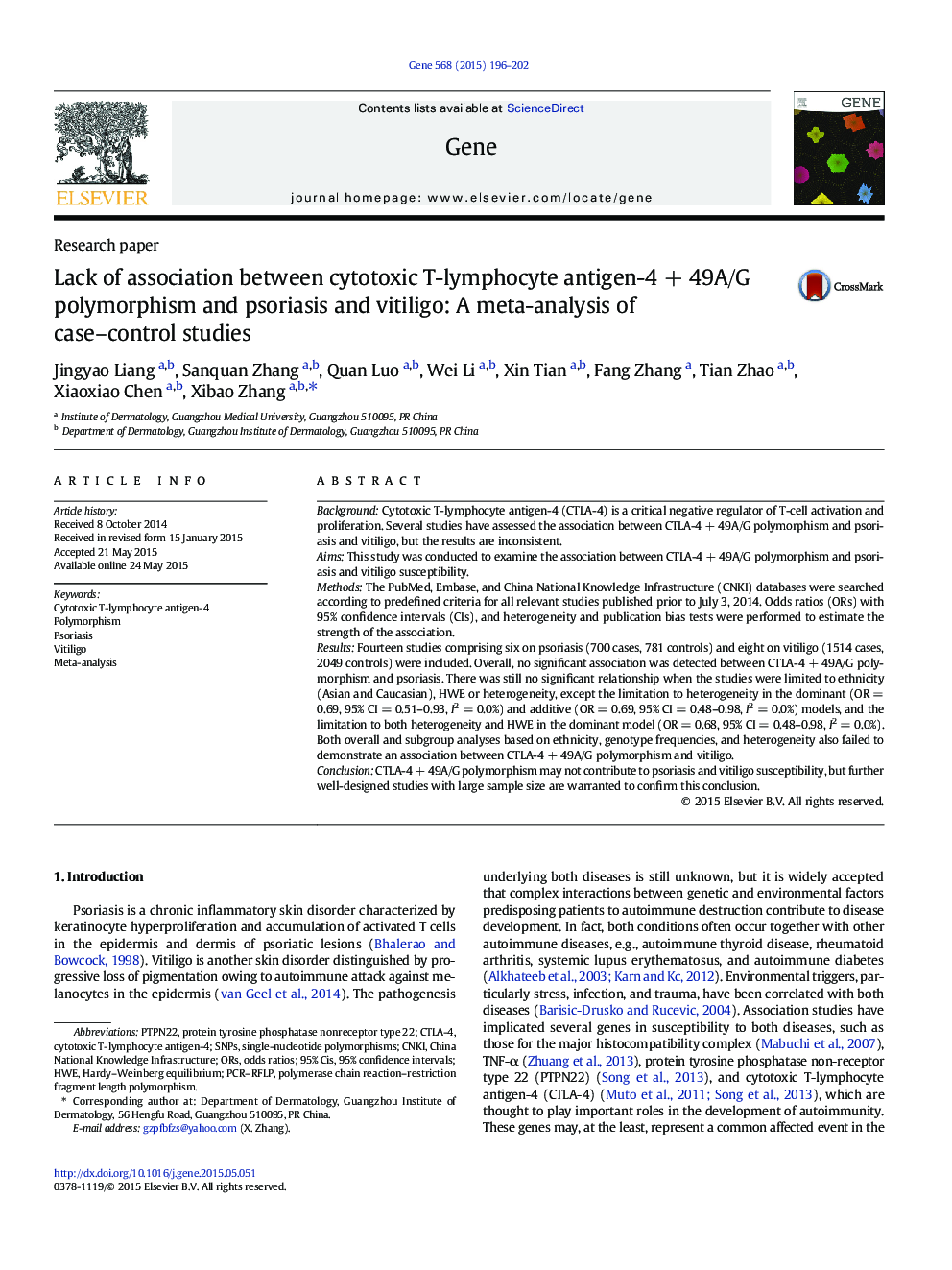| کد مقاله | کد نشریه | سال انتشار | مقاله انگلیسی | نسخه تمام متن |
|---|---|---|---|---|
| 2815673 | 1159885 | 2015 | 7 صفحه PDF | دانلود رایگان |

• CTLA-4 + 49A/G was not associated with psoriasis in overall analyses.
• CTLA-4 + 49A/G showed a protective effect for psoriasis in some subgroup analyses.
• CTLA-4 + 49A/G did not seem to contribute to vitiligo susceptibility.
BackgroundCytotoxic T-lymphocyte antigen-4 (CTLA-4) is a critical negative regulator of T-cell activation and proliferation. Several studies have assessed the association between CTLA-4 + 49A/G polymorphism and psoriasis and vitiligo, but the results are inconsistent.AimsThis study was conducted to examine the association between CTLA-4 + 49A/G polymorphism and psoriasis and vitiligo susceptibility.MethodsThe PubMed, Embase, and China National Knowledge Infrastructure (CNKI) databases were searched according to predefined criteria for all relevant studies published prior to July 3, 2014. Odds ratios (ORs) with 95% confidence intervals (CIs), and heterogeneity and publication bias tests were performed to estimate the strength of the association.ResultsFourteen studies comprising six on psoriasis (700 cases, 781 controls) and eight on vitiligo (1514 cases, 2049 controls) were included. Overall, no significant association was detected between CTLA-4 + 49A/G polymorphism and psoriasis. There was still no significant relationship when the studies were limited to ethnicity (Asian and Caucasian), HWE or heterogeneity, except the limitation to heterogeneity in the dominant (OR = 0.69, 95% CI = 0.51–0.93, I2 = 0.0%) and additive (OR = 0.69, 95% CI = 0.48–0.98, I2 = 0.0%) models, and the limitation to both heterogeneity and HWE in the dominant model (OR = 0.68, 95% CI = 0.48–0.98, I2 = 0.0%). Both overall and subgroup analyses based on ethnicity, genotype frequencies, and heterogeneity also failed to demonstrate an association between CTLA-4 + 49A/G polymorphism and vitiligo.ConclusionCTLA-4 + 49A/G polymorphism may not contribute to psoriasis and vitiligo susceptibility, but further well-designed studies with large sample size are warranted to confirm this conclusion.
Journal: Gene - Volume 568, Issue 2, 1 September 2015, Pages 196–202